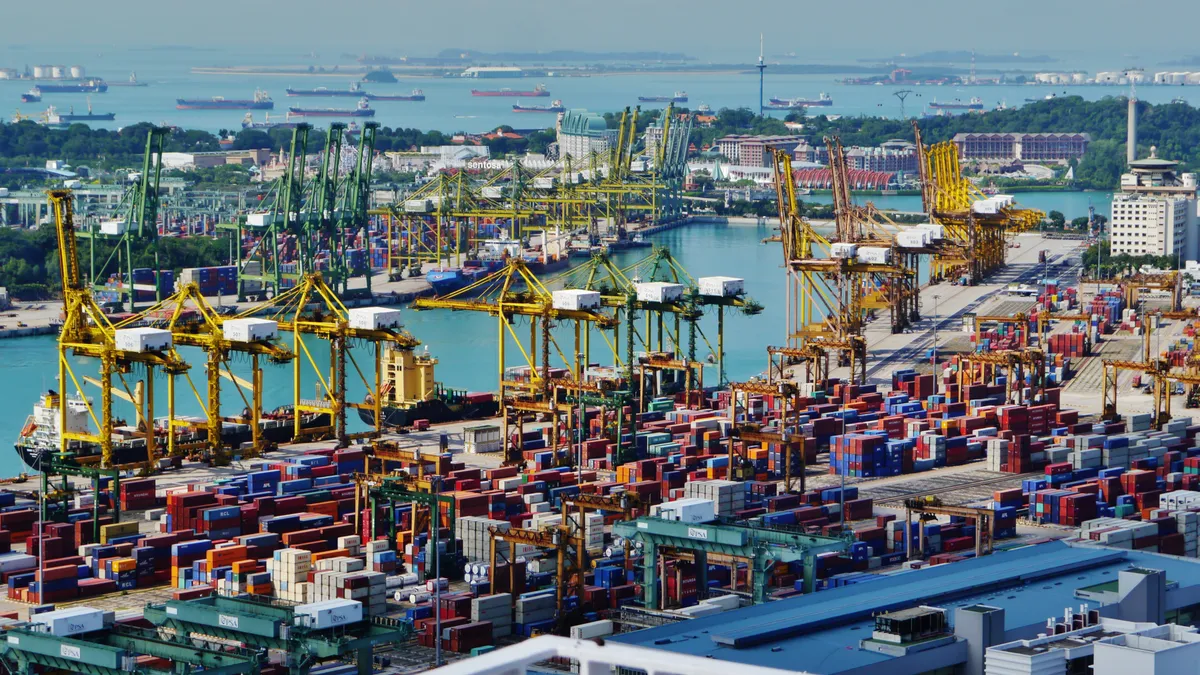Dive Brief:
- Lead times from input manufacturers increased by 222% in China, 201% in Europe and 200% in the U.S. between March 17 and 30, according to a survey of 559 primarily U.S.-based companies conducted by the Institute for Supply Management released Tuesday.
- While some factories in Asia are beginning to come back online, ISM found they are operating at 53% capacity on average, with transit bottlenecks to and from the continent exacerbating delays. U.S. manufacturing is operating at 79% capacity, though 69% of survey respondents expect U.S. lead times to lengthen in the coming weeks.
- In addition to supply disruptions, a slowing economy has supply chain managers increasingly concerned about demand for their products. "The data suggests that even as companies adjust to supply disruptions – even anticipating normalizing supply conditions by the third quarter – they are expecting lower aggregate demand this year, which promises to be the most long-lasting impact of the virus outbreak," ISM CEO Tom Derry said in a statement.
Dive Insight:
The Institute for Supply Management found companies that diversified sourcing during the U.S.-China trade war were better positioned to weather the COVID-19 outbreak, but 95% of businesses surveyed have now seen their supply chains impacted as lead times more than double across the world — up from 75% in the previous survey ISM released March 11.
For now, most U.S. companies (71%) reported having enough inventory to maintain current operations through the end of April and into Q3, adjusting their input levels in response to ongoing supply constraints and demand shifts.
However, ISM's most recent PMI report found manufacturing might not see positive growth until May due the scale of the disruptions from the pandemic.
"I think this is not a V-shaped recovery," Timothy Fiore, chair of ISM's Manufacturing Business Survey Committee, told Supply Chain Dive in an interview. He expects the sector will instead see a slower rebound into the early summer.
That said, recent economic reports indicate a recession poised to hit in the coming months.
"The magnitude and speed of collapse in activity that has followed [the COVID-19 outbreak] is unlike anything experienced in our lifetimes," the International Monetary Fund's Economic Counsellor and Director of Research Gita Gopinath wrote in a blog post Tuesday.
Calling the present situation "The Great Lockdown," the IMF projects global growth will fall to -3% in 2020, a downgrade of 6.3 percentage points from its last outlook report in January and "the worst recession since the Great Depression ... far worse than the Global Financial Crisis."
If the pandemic subsides by the end of this year, the IMF projects global growth to rebound to about 5.8%. Multiple factors could affect that timeline, the organization said, including the effectiveness of various government actions to limit bankruptcies and job losses.
Previous predictions of a recession in 2020 or 2021, then due to the U.S.-China trade war, led some supply chain and procurement departments to cut costs, diversify sourcing and invest in operational efficiency measures to insulate themselves from risks earlier on in mid-2019.
These firms will be best positioned to weather the stronger downturn to come, Derry said in a video announcement, but the supply and demand disruptions will remain a global issue that will challenge even well-prepared organizations.















